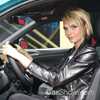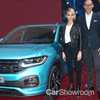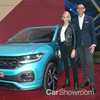Volkswagen have finally unveiled their latest addition to their fast-expanding SUV and crossover line-up, the T-Cross. The German automaker has been teasing their new rival to other European class leaders such as the Renault Captur, Peugeot 2008, and Opel Grandland X.
It actually made its official debut at 3 different venues over the course of the same day in Shanghai, Sao Paolo and Amsterdam. As Ralf Brandstätter, Chief Operating Officer of Volkswagen Brand, explains: “It shows just how important the T-Cross is to the Volkswagen brand as a truly global product.”
Should it make its way to Australian shores, it should fit neatly into the ring with the likes of the Mazda CX-3 and Toyota C-HR, and VW is adamant in projecting its youthful and dynamic image to make sure potential new buyers add it to their shortlist.
To little surprise, it plays the part of a raised and slightly ruggedised Volkswagen Polo quite well, though the company is quick to assert that it’s a far different package, and indeed the automotive group already had a very similar product from which to accelerate development - the Seat Arona - and now emerges as its smallest crossover.
Built in Pamplona alongside the Arona on the MQB A0 platform that also underpins the Polo and other small-to-medium sized passenger vehicles under the VW Group, the T-Cross shares an identical wheelbase to the small hatch as well as occupies very similar footprints on the road.
However, being taller the T-Cross does have an advantage in practicality, able to easy fold the rear seats to access a maximum of 1,281-litres of cargo room. Under normal circumstances, those 2nd row seats can be moved forwards or backwards depending on whether priority is placed on luggage room or leg room.
At launch for most European markets, Volkswagen are offering the T-Cross with a choice of three petrol engines and one diesel option - all of them turbocharged. It kicks off with a 1.0-litre three-cylinder TSI petrol that, depending on variant and tune, generates either 70kW or 85kW. Above this, a 1.5-litre TSI four-pot takes over with 110kW while a 1.6-litre TDI gets along with 70kW.
Driver assist systems will also be a high priority here, an most variants are assured to be quite well equipped relative to the price and competition. Confirmed for all grades are AEB with pedestrian monitoring wrapped in a package VW calls Front Assist, as well as Lane Keep Assist, Hill Start Assist, Blind Spot Monitoring, and Rear Cross Traffic Alert.
Fancier convenience items such as Driver Alert Monitor, automatic Park Assist, and Adaptive Cruise Control, though, will be reserved as either an optional extra or only to range-topping variants.
For more on Volkswagen cars, check out our Showroom.































